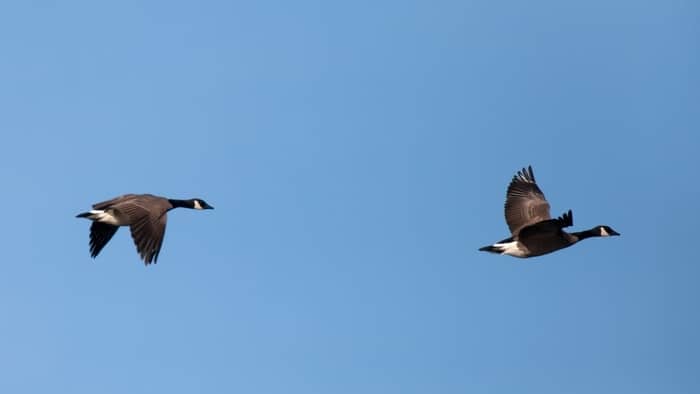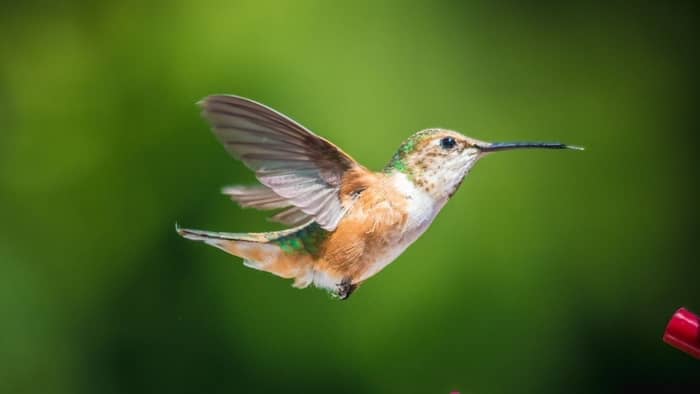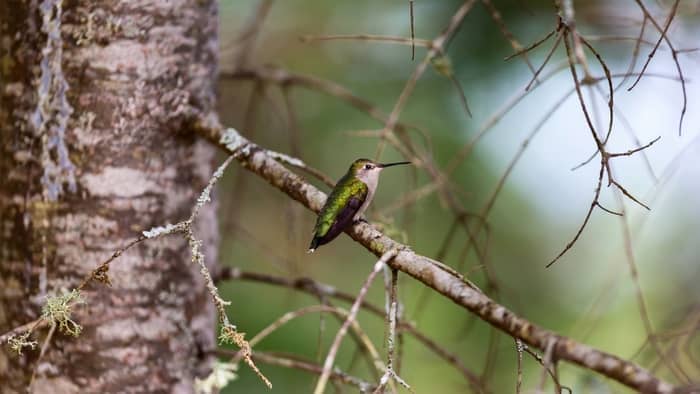Do you ever wonder if hummingbirds migrate on the backs of geese? Ever wondered if this old myth that has been told for a long time is actually true or not? Let’s get to know more about this.
There are so many stories or tales surrounding the migration of these sweet iridescent birds. It’s important you know the fact from fiction so you can be more enlightened about these birds.
Hummingbirds are fascinating little animals that migrate from Central America and Mexico and back to our side during spring manly to nest and breed. But what exactly is true about their migration? Do hummingbirds really migrate on the backs of geese or is it just a false tale? Let’s look into this.
Do Hummingbirds Ride On Geese
The straight-up answer is no! Hummingbirds do not migrate on the backs of geese. Hummingbirds do migrate at the appropriate time but a hummingbird migrating on the back of geese is just another old wives tale.
There are some justifiable reasons why hummingbirds won’t migrate on the back of geese. So let’s look at some of these reasons.

Why Hummingbirds Do Not Migrate On The Back Of Geese
Just think of hummingbird hitching ride on geese and why this old tale can’t be true:
- Firstly, the majority of geese known tend to winter in the southern of the United States. But hummingbirds tend to winter farther than this. Hummingbirds have been known to mostly winter in Mexico and Central America. Therefore, hummingbirds and geese migrate at different times and different destinations.
- Geese migration isn’t early enough. Geese can still be far away north in the arctic when hummingbirds should have been in the south drinking nectar and preparing for breeding. They can’t just keep waiting on geese.
- Also, geese don’t stop over to feed on nectar. Hummingbirds need enough energy as they ride this far journey. Hummingbirds get the required energy from sipping nectar solutions.
- What if there are too many hummingbirds these geese need to carry along the journey? One goose would have to carry multiple hummers. That’s not even logical.
So, looking at all these points, it’s safe to say hummingbirds do not migrate on the back of geese. Hummingbirds would rather migrate of their own accord. These birds are quite tenacious so they don’t need any assistant for their migration.
Fact About Hummingbird Migration
It is necessary for hummingbirds to migrate at appropriate periods once they have spent spring far north nesting and breeding. They need to migrate back to Mexico and Central America to spend winter and they do this by traveling a very long journey.
Hummingbirds may look tiny and fragile. But do not be decided, these lustrous birds are very agile and they can travel as far as nearly 4,000 miles.
To fuel their long journey, hummingbirds will begin to gather up fat close to their migrating period. They will feed more than they usually would and would gain fat and almost double their original weight. For instance, a hummingbird weighing about 3 grams can add 2 grams extra to fuel its migration.
This is why we encourage you to put up more feeders and refill them constantly once their migrating periods are around the corner.
However, the majority of the species that nest and breeds north of Mexico in the United States and Canada tend to migrate to different wintering grounds.
Also, hummingbirds tend to migrate or fly alone. They don’t fly in flocks. This is very helpful in making it hard for predators to spot these tiny birds as they migrate. Flying alone keeps them safe as flock flying can draw attention from predators.
Hummingbird Species That Makes The Longest Migration
Hummingbirds can fly nonstop as it migrates to and fro. It can take approximately 18 to 22 hours for these brave birds to complete this remarkable solitary journey.
Different species of hummingbirds migrate at a different pace. The Rufous hummingbird is the longest migration species. This species of hummingbird can migrate about 3,900 miles that’s almost 4,000 miles which are quite huge for such a tiny bird.
Rufous hummingbird tends to migrate north from Mexico to Alaska along the coast. It winters in Mexico and Central America. Once this hummingbird species have finished breeding, it moves south.
When Do Hummingbird Begin To Migrate South & North?

Hummingbirds tend to migrate south to winter in Mexico and Central America. Then they will migrate back north to our side to nest and breed.
Hummingbirds know when it’s time to begin migration and their migration corresponded with the changes in season. Experts believe migration is triggered by the changes in daylight duration and once the temperature begins to drop.
These changes affect plants and insect cycles and there will be changes in the abundance of nectars in flowers. Once hummingbirds sense all these changes, they prepare for migration. Instinct is another factor that can trigger hummingbirds to migrate.
Once the time of migration is close, they begin to increase their feeding habit to gain more weight. They can gain about 30 percent of their body weight or even more than. This helps them fuel their long journey.
Hummingbirds will migrate back north to find the most suitable place to nest and breed. Their migration back to the north is usually around spring.
The southern region of America may begin to witness hummingbirds arriving as early as February. Then they may begin to arrive in Alaska by May.
Do Hummingbirds Migrate On The Backs Of Geese: Conclusion

Hummingbird migrating on the back of geese may sound entertaining, but there is definitely no truth in this. Therefore, hummingbirds do not migrate on the backs of geese.

